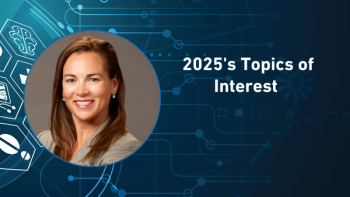PC: As CGTs expand to serve broader patient populations, what strategies can developers use to overcome market access barriers such as payer skepticism and limited reimbursement pathways?
Kevin Chinn: Central to overcoming the challenges is the need to increase payer awareness of the product’s clinical and economic value, including its safety, efficacy and durability.
Conducting a market landscape analysis and engaging payers early allows developers to gain feedback on target product profile, evidentiary needs, and value proposition—all of which can inform critical decisions, like clinical trial design, endpoint selection, and data collection methodologies. The insights gleaned from payer engagements, coupled with clinical trial results, health economics and outcomes research, and real-world evidence (RWE), will empower developers to create an evidence package that showcases the product’s value and addresses questions from key stakeholders related to clinical safety, efficacy, and cost-effectiveness.
Pre-approval communication, conducted in compliance with the law, can be an effective way to provide robust evidence of clinical safety, efficacy, and cost-effectiveness. About half of the US payers surveyed by Cencora1indicated that pre-approval information exchange (PIE) impacts the timing of patient access to certain product categories, specifically oncology, products for rare diseases, and cell and gene therapies. Through PIE, developers can share information such as background on disease state, product and indication overviews, patient use projections, clinical study results, and pricing information.
Stakeholder engagement should extend through regulatory approval and the commercial launch phase. For example, developers should continue to share updated data and information from post-marketing surveillance and RWE studies to carve out a more well-defined position that underscores the product’s clinical and economic value, helping to differentiate the product in the marketplace.
PC: Given the rapidly evolving regulatory landscape in the CGT space, what key considerations should developers prioritize to stay compliant, while also accelerating time-to-market?
Chinn: Plan early. That’s true for most products, but it’s particularly relevant for CGT developers in a rapidly evolving regulatory environment in which there is the potential to capitalize on various pathways designed to facilitate expedited development and review.
Through planning and engaging with relevant regulatory bodies during the development phase, manufacturers will be better positioned to create and execute a well-defined strategy that helps them maintain compliance with global requirements, mitigate the risk of delays, and optimize the path to reach market more efficiently. Engaging regulators can provide developers valuable feedback, including potential alignment on a clinical endpoints plan and clarity on which regulatory pathway could be applicable for their product. Research shows2 use of at least one of the FDA’s expedited pathways—specifically Priority Review, Breakthrough Therapy, Accelerated Approval, and Fast Track3 approaches—helped, on average, to accelerate development timeline by 3.5 years.
Developers need to account for several key factors to meet chemistry, manufacturing, and controls (CMC) requirements, including:
- Potency: Developers can reduce the risk of delays and align product quality testing with regulatory expectations by identifying critical quality attributes (CQA) for your product’s safety, efficacy and quality. For example, a potency CQA—which should be measurable, scalable, and reasonable to assess during the compressed timelines of a commercial program—can help to ensure the final product is consistently manufactured, safe, and effective.
- Comparability: For effective batch comparability tests, developers should retain samples from Phase I trials so they can establish parameters for later phases and then establish a comparability narrative throughout development. Since manufacturing processes and potency assays may change during development, monitoring and controlling them is crucial to ensure the final product meets regulatory standards for drug substance safety and quality across batches.
Experienced partners can help developers navigate the regulatory landscape efficiently by facilitating productive interactions with regulatory bodies, assisting in preparing and submitting regulatory documents, ensuring compliance with regulatory frameworks, and supporting the design and execution of long-term follow-up studies.
Key Takeaways
- Outcome-based contracts and value-driven reimbursement frameworks are becoming essential as CGTs target larger patient populations.
- Developers should implement integrated patient services and stakeholder coordination to ensure seamless care from enrollment through long-term follow-up.
- Identifying critical quality attributes and ensuring batch comparability from Phase I trials can help avoid regulatory delays and ensure commercial readiness.
PC: Patient access remains a major hurdle for CGT commercialization. How can developers maintain end-to-end visibility across the patient journey and effectively coordinate with stakeholders to support access?
Chinn: The treatment development and patient journey involves a complex web of components, which requires increased visibility. from the moment a patient is enrolled through to patient administration, payment coordination and long-term outcomes tracking. There is no room for error with CGTs.
Leveraging a patient services program for enrollments can help orchestrate services and facilitate real-time data exchange, providing physicians and patient services teams increased visibility across the treatment development and patient journey. Creating an integrated implementation plan that involves all key stakeholders will bridge gaps to facilitate a coordinated and streamlined patient journey.
PC: What are the most common pitfalls that CGT developers face when transitioning from clinical trials to commercial distribution, and how can they be proactively addressed?
Chinn: It’s critical to prioritize commercial readiness during clinical development. I’ll focus on two key areas, in particular.
CGTs generally require a heightened focus on three key logistical elements: time criticality, chain of custody (COC) and identity (COI), and temperature-controlled transport and storage, such as cryogenic storage. The challenges underscore the importance of developing a compliant and scalable logistics plan early—one that addresses key considerations, such as choosing the appropriate packaging solution, navigating cryogenic shipping capacity limitations and narrow delivery timeframes, maintaining a secondary packaging room and ensuring accurate product labeling. Insufficient planning during product development can lead to costly mistakes and delays.
By engaging logistics partners during product development, companies can align on the feasibility and capacity of different shipment and storage models, proactively address potential transportation challenges, and identify a logistics network that can support product integrity across the supply chain, including consistent cold-chain coverage.
Another potential pitfall is the challenge of managing multiple vendors for various needs. The path from therapy manufacturing to patient administration and long-term outcomes tracking is lined with potential challenges, requiring heightened coordination and flawless execution. Any breakdowns in communication could delay product availability, impacting product success and, more importantly, patient access.
PC: As CGTs introduce unique challenges in pricing and reimbursement, what innovative models or partnerships can help ensure sustainable market access and long-term viability?
Chinn: As more CGTs in development target larger patient populations—whether because of the prevalence of the disease or because it’s an earlier-line therapy—continued innovation in contracts and financial partnerships is critical to unlock access and realize the full potential of these therapies.
Innovative pricing and reimbursement models are becoming a pressing payer budgetary consideration to address. Payers have expressed interest in alternative payment models,4 which may help to mitigate budget impact. One example is outcomes-based pricing models, which align costs with demonstrated value by tying payment to the therapy achieving specific clinical benchmarks.
As part of their market access strategy, it’s increasingly important to highlight the product’s potential economic value, particularly as earlier-line therapies may provide larger offset costs. Collaborations with payers to develop innovative pricing arrangements—supported by comprehensive data on long-term benefits and cost-effectiveness—can also help facilitate broader adoption of CGTs.
References
1. Penley B, Hydery T, Dragovich CM. Optimizing the Timing of Pre-Approval Information Exchange (PIE) Engagement for Oncology Products, Products for Rare Diseases, and Cell and Gene Therapies (CGTs). Cencora. October 14, 2024. https://go.cencora.com/amcp-nexus-poster-optimizing-timing-of-pre-approval-information-exchange
2. Global Trends in R&D 2025. IQVIA Institute for Human Data Science. March 26, 2025. https://www.iqvia.com/-/media/iqvia/pdfs/institute-reports/global-trends-in-r-and-d-2025/iqvia-institute-rd-trends-2025-forweb.pdf
3. Fast Track, Breakthrough Therapy, Accelerated Approval, Priority Review. US Food & Drug Administration. June 12, 2023. https://www.fda.gov/patients/learn-about-drug-and-device-approvals/fast-track-breakthrough-therapy-accelerated-approval-priority-review
4. Dodda S, Hikmat Z, Sugarman R , Zheng C, Stuchiner A, Sporck M, Schroader B. Us Payer Perceptions of Innovative Contracts with Cell and Gene Therapies. Xcenda. March 21, 2023. https://www.amerisourcebergen.com/-/media/assets/xcenda/english/content-assets/conference-and-poster-presentations/2023/innovative-cgt-contracts_poster_amcp-2023.pdf






